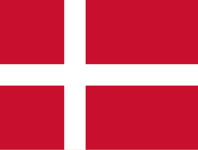Become Danish
IT’S TIME TO
AUTHENTIC HUNGARIAN LIVING
Explore the vibrant city of Budapest, the Spice of Europe, and the rich culture of Hungary, its delicious cuisine and unique traditions.

DIVE INTO A LIFESTYLE
From its founding in 896 AD by the Magyar tribes to its golden age as part of the Austro-Hungarian Empire, Hungary has played a pivotal role in European history. Its rich cultural tapestry reflects influences from Roman, Ottoman, and Habsburg rule, blended with deeply rooted Magyar traditions. With its stunning architectural heritage, from medieval castles to iconic thermal baths, Hungary offers a timeless journey through its dynamic and enduring cultural legacy.
After the fall of communism in 1989, Hungary underwent a remarkable transformation. The nation embraced political and economic reforms, joining the European Union in 2004 and positioning itself as a dynamic player in Central Europe. Its thriving arts scene, expanding tourism industry, and focus on education and technology showcase a country that honors its past while forging a bright future. Today, Hungary is a bridge between East and West, celebrated for its unique language, cuisine, and spirit of resilience.
We have created a selection of words and expressions that you won't find in any textbook or course, to make you become a real native by helping you understand Hungarian words that carry a deeper cultural meaning as well as expand your knowledge of the country and its history.


EXPAND YOUR KNOWLEDGE
If you are interested in learning more about Hungarian culture and history as well as the language, we recommend that you download our complete Hungarian language course!
You will not only receive all the contents available on our website in convenient pdf or epub formats but also additional contents, including bonus vocabulary, more grammar structures and exclusive cultural insights with additional Hungarian vocabulary that you won't find anywhere else.
The additional articles include over 100 words or expressions related to the culture of the Hungarian people. Not only will you be able to speak the Hungarian language with confidence but you will amaze your listeners thanks to your knowledge of their country and history.
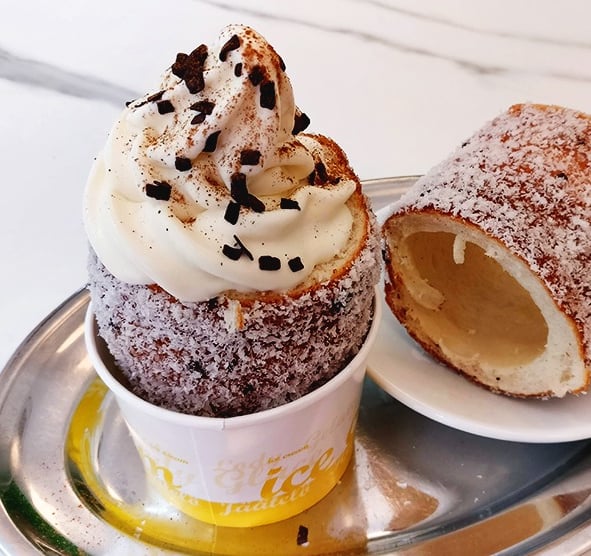

CHIMNEY CAKE
Kürtőskalács (chimney cake) is one of Hungary's most beloved traditional desserts. This édes finomság (sweet delicacy) is made from a special kelt tészta (raised dough) that is carefully rolled onto a wooden or metal cylinder, brushed with melted butter, and baked over an open flame or in an oven. During baking, the dough develops its signature golden-brown crust, crisp on the outside while remaining soft and fluffy on the inside. Once baked, the hot kürtőskalács is rolled in a variety of toppings like cukor (sugar), fahéj (cinnamon), kakaó (cocoa), or even mogyoró (nuts), giving it a deliciously sweet and aromatic flavor. Traditionally enjoyed during festivals, fairs, and special occasions, kürtőskalács has become a symbol of Hungarian culture and culinary artistry. Modern variations include fillings like csokoládékrém (chocolate cream) or even fagylalt (ice cream). Whether you try it fresh from a piac (market) or make it at home, kürtőskalács is a perfect example of Hungary’s rich gastronomic heritage, combining simple ingredients with traditional techniques for an unforgettable experience.
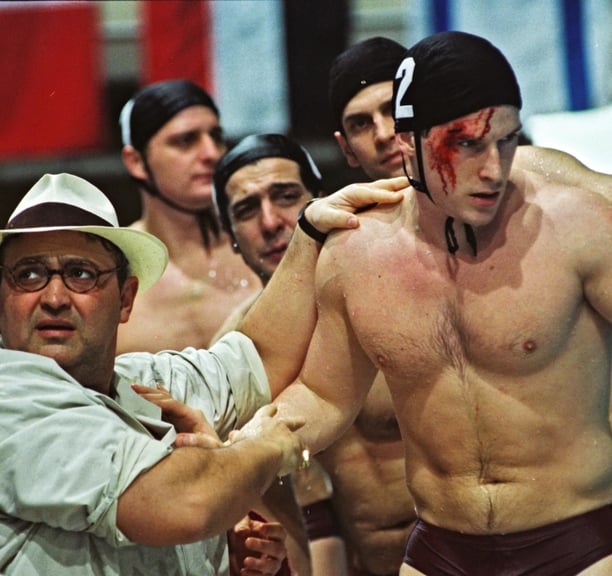

WATER POLO
Known locally as vízilabda (water polo), the sport holds a special place in Hungarian culture due to the national team's consistent success on the international stage. Hungary’s vízilabda-válogatott (water polo national team) is among the most decorated in the world, with numerous Olympic, World Championship, and European Championship titles. The sport also played a symbolic role during the Hungarian Revolution of 1956 (1956-os forradalom). Just weeks after the Soviet Union crushed the uprising, Hungary faced the USSR in the semi-finals of the Melbourne Olympics. Known as the "Blood in the Water" match, the game turned into a symbolic battle, reflecting Hungary's resistance and defiance. The Hungarian team emerged victorious with a 4-0 win, and the image of the bloodied face of Hungarian player Ervin Zádor became an iconic representation of the struggle for freedom. Today, water polo remains an integral part of Hungary’s sports identity, and the nation continues to produce world-class players, solidifying its legacy in the sport.


BUSO CARNIVAL
The Busójárás (Busó Carnival) is a traditional Hungarian festival held in Mohács (a town in southern Hungary), celebrated every year during the Carnival season. According to legend, the festival originated during the Ottoman occupation of Hungary when the locals of Mohács dressed in frightening busójelmezek (Busó costumes) and wore carved wooden álarcok (masks) to scare away the invaders. Today, the event symbolizes the triumph of good over evil and the arrival of spring. It is recognized as a UNESCO Intangible Cultural Heritage. During the festival, participants in busóruha (Busó attire) parade through the streets and interact playfully with the crowd. One unique feature of the event is the use of noisy instruments, such as kolompok (cowbells) and rattles, to create a cacophony that drives away winter spirits. A central highlight is the symbolic burning of a coffin on the final day, signifying the end of winter. The festival also includes vibrant markets where traditional kézműves tárgyak (handcrafted items) and local delicacies like fánk (Hungarian doughnuts) are sold.


PAPRIKA
Paprika is one of the most iconic spices in Magyar konyha (Hungarian cuisine). It is made from dried and ground paprika (pepper), which comes in various types, from sweet to hot. Hungary is famous for its fűszerpaprika (spice paprika), which adds rich flavor and vibrant color to many traditional dishes. The most well-known dish featuring this spice is pörkölt (stew), often mistaken for gulyás (goulash), which is actually a soup rather than a stew. Another famous dish is paprikás csirke (chicken paprikash), where the creamy sauce gets its characteristic taste from őrölt paprika (ground paprika).The best quality paprika por (paprika powder) comes from the Szegedi paprika (Szeged paprika) and Kalocsai paprika (Kalocsa paprika) regions, both known for their long tradition of cultivating csípős paprika (hot paprika). Whether used in kolbász (sausage) or sprinkled over tojásrántotta (scrambled eggs), it enhances the taste of any meal. For a truly authentic experience, trying füstölt paprika (smoked paprika) can bring a deep, smoky aroma to various dishes.
RUBIK'S CUBE
The Rubik-kocka (Rubik’s Cube), invented by Hungarian architect Ernő Rubik, is one of the world’s most famous puzzles. While the exterior of the kocka (cube) is known for its colorful and rotating oldalak (faces), the internal mechanism is just as fascinating. Inside the cube, small rugók (springs) play a crucial role in maintaining its structure and smooth movement. These rugók are part of the forgómechanizmus (rotating mechanism), allowing the cube’s elemek (pieces) to snap back into place while keeping the right amount of tension. Competitive kockaforgatás (speedcubing) enthusiasts often customize their cubes by adjusting the csavarok (screws) and rugók, fine-tuning the tension for faster and more efficient turning. The balance between tight and loose settings affects kockaérzékenység (cube sensitivity), which influences how quickly the cube can be solved. Some modern speedcubes use mágnesek (magnets) instead of or in addition to rugók, offering a different solving experience.
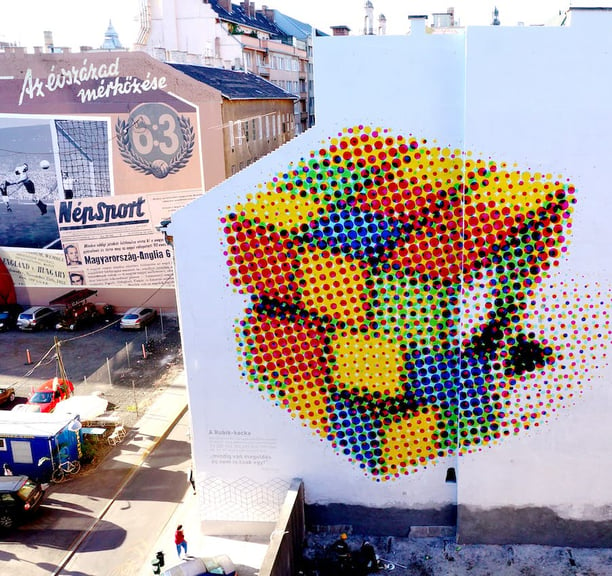

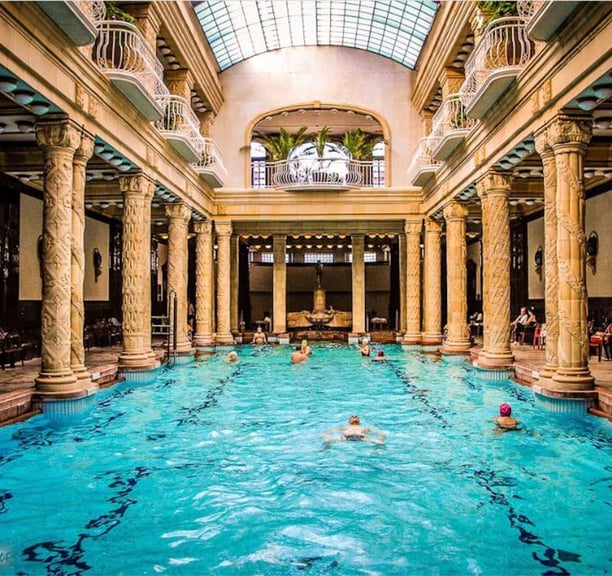

HOT SPRINGS
Hungary is famous for its termálvíz (thermal water), with numerous gyógyfürdő (medicinal baths) and melegvizes forrás (hot springs) spread across the country. The capital, Budapest, is often called the fürdőváros (city of baths) due to its many historic fürdők (baths), such as Széchenyi Fürdő (Széchenyi Bath) and Gellért Fürdő (Gellért Bath), where visitors can relax in naturally heated medencék (pools). The víz összetétele (water composition) in these springs is rich in minerals like calcium, magnesium, and sulfur, which are believed to have health benefits for joint pain, circulation, and skin conditions. Beyond Budapest, places like Hévízi-tó (Lake Hévíz), the largest biologically active thermal tó (lake) in the world, attract visitors seeking relaxation and healing. Many gyógyhelyek (spa resorts) offer traditional treatments, such as iszappakolás (mud therapy) and hidroterápia (hydrotherapy). The popularity of termálfürdő (thermal baths) dates back to Roman and Ottoman times, and today they remain an essential part of Hungarian culture and wellness.
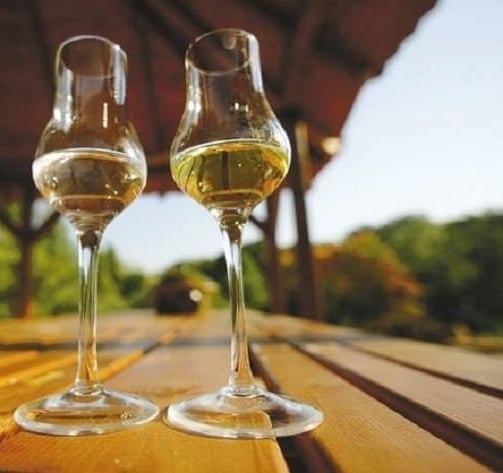

PALINKA
Pálinka (Hungarian fruit brandy) is one of Hungary’s most famous italok (drinks), deeply embedded in the country’s culture and traditions. This strong szeszes ital (alcoholic beverage) is made by distilling fermented gyümölcs (fruit), with popular varieties including barackpálinka (apricot pálinka), szilvapálinka (plum pálinka), körtepálinka (pear pálinka), and cseresznyepálinka (cherry pálinka). The production of pálinka follows strict regulations to ensure quality, and only fruit grown in Hungary and distilled within the country can bear the name. Some of the most well-known pálinkafőzdék (distilleries) are found in regions such as Kecskemét, famous for its apricot pálinka, and Szabolcs, known for its exquisite plum varieties. Traditionally, pálinka is consumed as an étkezés előtti ital (aperitif) or as a gyomorerősítő (digestive aid) after meals. Hungarians often say, "Pálinka nem ital, hanem gyógyszer!" (Pálinka is not just a drink, but a remedy!), highlighting its role in folk medicine. It is best enjoyed at szobahőmérséklet (room temperature), allowing its rich aroma and fruity flavors to fully develop.
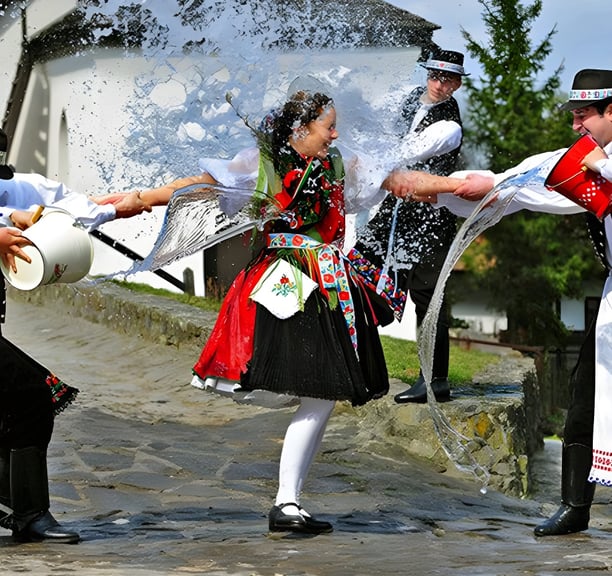

EASTER
Húsvét (Easter) is one of the most significant Christian ünnep (holidays) in Hungary, celebrated with a mix of religious traditions and folk customs. The holiday begins on nagypéntek (Good Friday), a public holiday marking the crucifixion of Christ, followed by nagyszombat (Holy Saturday), when families prepare for the festive húsvéti mise (Easter Mass). On húsvétvasárnap (Easter Sunday), many attend church services and enjoy a traditional húsvéti ebéd (Easter lunch) featuring sonka (ham), tojás (eggs), and kalács (sweet braided bread). A unique Hungarian tradition takes place on húsvéthétfő (Easter Monday), called locsolkodás (sprinkling), where boys visit girls and sprinkle them with víz (water) or parfüm (perfume) in exchange for decorated hímes tojás (painted eggs) or small treats. This custom, rooted in ancient fertility rites, is still practiced in many villages. The holiday is also a time for families to gather, exchange ajándékok (gifts), and enjoy festive sütemények (cakes). In some regions, Easter fairs and népi játékok (folk games) bring communities together.
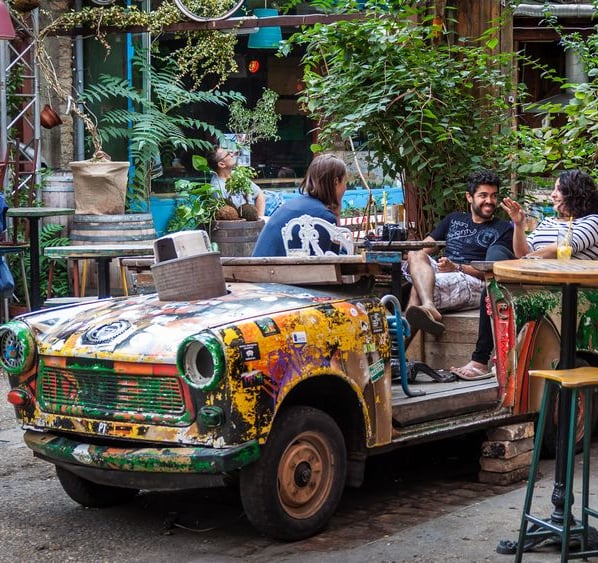

RUIN PUBS
Romkocsmák (ruin pubs) are one of Budapest’s most unique nightlife attractions, offering a mix of history, creativity, and an underground atmosphere. These eclectic bárok (bars) are located in abandoned buildings, mainly in the old Jewish Quarter, and have transformed neglected épületek (buildings) into vibrant social spaces filled with mismatched furniture, graffiti-covered walls, and quirky decorations. The first and most famous romkocsma (ruin pub) is Szimpla Kert, which set the trend for this alternative nightlife scene. Other popular spots include Instant-Fogas, a large complex with multiple dance floors, and Csendes for a more relaxed, artistic vibe. These helyek (places) often feature live music, DJ sets, and even kultúrprogramok (cultural programs), such as film screenings and art exhibitions. Many visitors enjoy the bohemian atmosphere and affordable italok (drinks), including local favorites like fröccs (wine spritzer) and pálinka (fruit brandy). The ruin pub scene is constantly evolving, with new szórakozóhelyek (entertainment venues) popping up, each offering a unique experience.
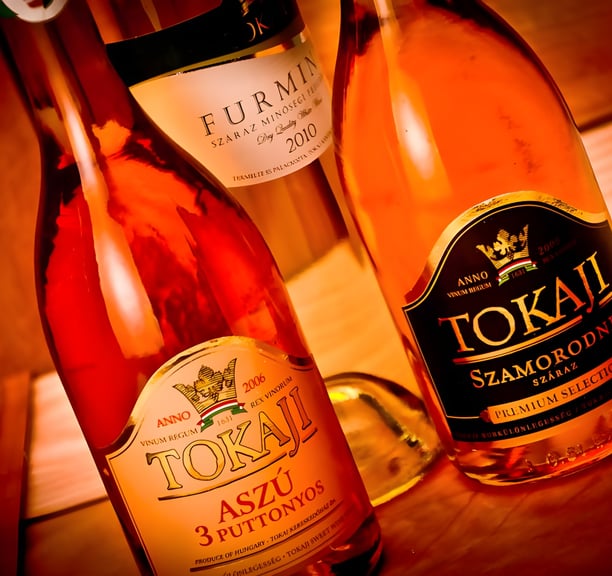

TOKAJ WINE
Tokaji bor (Tokaj wine) is one of Hungary’s most famous and prestigious bor (wines), produced in the historic Tokaj-Hegyalja borvidék (Tokaj-Hegyalja wine region), a UNESCO World Heritage site. The region’s volcanic talaj (soil) and favorable climate contribute to the unique character of the szőlő (grapes), particularly the Furmint, Hárslevelű, and Sárgamuskotály varieties, which are essential for making aszú (noble rot wine). The most famous wine from the region is Tokaji Aszú, a rich, golden dessert wine made from aszúszemek (botrytized grapes) that are carefully handpicked and added to a base wine. The sweetness of Tokaji Aszú is measured in puttony (a unit indicating sugar content), with higher numbers signifying greater sweetness and concentration. Another notable variety is Szamorodni, which can be either édes (sweet) or száraz (dry), depending on the proportion of botrytized grapes. The wines are traditionally aged in underground pincék (cellars) carved into volcanic rock, allowing them to develop complex flavors. A famous saying, "Vinum Regum, Rex Vinorum" (Wine of Kings, King of Wines), reflects the historical prestige of Tokaji bor, which has been enjoyed by European royalty for centuries.


LAKE BALATON
Balaton (Lake Balaton) is the largest freshwater tó (lake) in Central Europe and one of Hungary’s most popular tourist destinations. Located in the Transdanubian region, it is often called the magyar tenger (Hungarian Sea) due to its vast size and scenic beauty. The northern shore is famous for its volcanic hegyek (hills) and historic borvidék (wine region), particularly around Badacsony, where visitors can taste traditional Hungarian wines such as kéknyelű (a local white wine). The southern shore, with its long, shallow waters, is perfect for fürdőzés (bathing), making it ideal for families. Siófok, known as the summer capital, offers vibrant nightlife, while Tihany is famous for its stunning apátság (abbey) and breathtaking panoramic views. The Balaton-felvidék (Balaton Uplands) is a paradise for nature lovers, featuring hiking trails, levendulamezők (lavender fields), and charming falvak (villages). Water sports such as vitorlázás (sailing) and szörfözés (windsurfing) are also popular activities. Each summer, the lake hosts the Balaton-átúszás (Balaton Crossing), a famous swimming competition.


SZIGET FESTIVAL
Sziget Fesztivál (Sziget Festival) is one of Europe's largest and most famous zenei fesztiválok (music festivals), attracting visitors from all over the world. Held annually in Budapest on the Óbudai-sziget (Óbuda Island), the event spans multiple days and features an impressive lineup of international and Hungarian artists across various genres, from rockzene (rock music) and elektronikus zene (electronic music) to népzene (folk music) and világzene (world music). The festival, which started in 1993, has grown into a unique cultural experience, offering much more than just music. Visitors can enjoy színházi előadások (theater performances), képzőművészeti kiállítások (art exhibitions), and cirkuszi előadások (circus performances), creating an immersive atmosphere. The fesztiválozók (festival-goers) can camp on-site or stay in nearby accommodations in Budapest.The festival is often called the "Island of Freedom," emphasizing its open-minded and welcoming atmosphere.
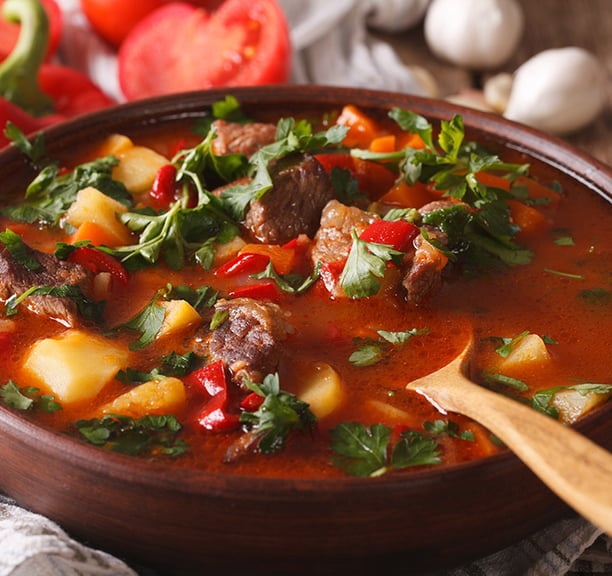

GOULASH
Gulyás (goulash) is one of Hungary’s most iconic dishes, deeply rooted in the country’s culinary traditions. This rich and flavorful leves (soup) is made with tender beef, onions, paprika, potatoes, and other vegetables, slowly cooked to perfection. The key ingredient is fűszerpaprika (spice paprika), which gives the dish its characteristic deep red color and distinct taste. Historically, gulyás was prepared by Hungarian herdsmen, or gulyások (herdsmen), in large cauldrons called bogrács (kettle), over an open fire. Today, it remains a staple in Hungarian cuisine, enjoyed both in homes and in traditional csárda (tavern-style restaurant) settings. While there are variations, such as alföldi gulyás (Great Plain goulash), which includes additional vegetables, and babgulyás (bean goulash), made with beans instead of potatoes, the essence of the dish remains the same: a hearty, warming meal perfect for any season. Some people confuse pörkölt (stew) with gulyás, but pörkölt is thicker and served as a main dish, whereas gulyás is a more liquid-based leves (soup). The dish is best enjoyed with fresh bread and sometimes a side of csipetke (pinched noodles), small handmade pasta pieces that add texture to the dish.


UNICUM
Unicum is a traditional Hungarian gyomorkeserű (herbal liqueur) that has been a symbol of Hungary for over 200 years. Created by Dr. József Zwack in the late 18th century, this unique likőr (liqueur) is made from a secret blend of more than 40 gyógynövény (medicinal herbs), giving it a distinctive bitter taste. The drink is aged in hordó (barrels), which enhances its rich and complex flavor. Unicum is often enjoyed as an aperitif (pre-meal drink) or digestív (digestif), believed to aid digestion. The brand’s production is still managed by the Zwack család (Zwack family), ensuring that the original recipe and tradition remain unchanged. One of the most famous variations is Unicum Szilva (Unicum Plum), which is aged with aszalt szilva (dried plums), giving it a smoother, slightly sweeter flavor. The iconic Unicum üveg (Unicum bottle) is easily recognizable with its round shape and red cross logo. Many Hungarians associate Unicum with celebrations and social gatherings, and it is a popular souvenir for visitors.
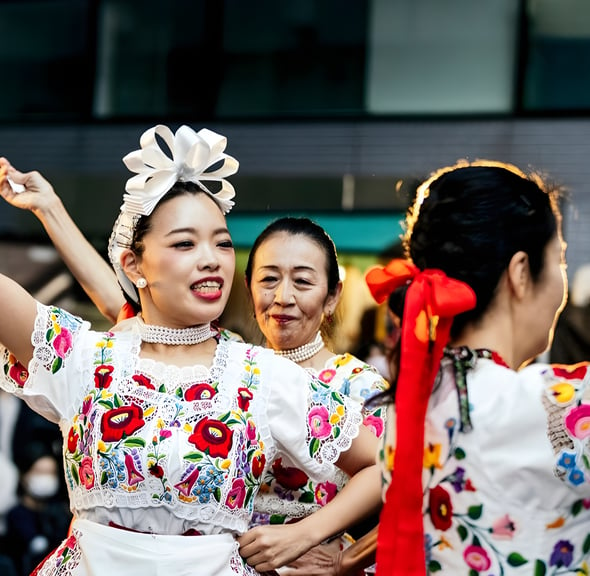

EXPAND YOUR KNOWLEDGE
If you are interested in learning more about Hungarian culture and history as well as the language, we recommend that you download our complete Hungarian language course!
You will not only receive all the contents available on our website in convenient pdf or epub formats but also additional contents, including bonus vocabulary, more grammar structures and exclusive cultural insights with additional Hungarian vocabulary that you won't in any other textbook.
The additional articles include specific words or expressions related to the culture of the Hungarian people. Not only will you be able to speak the Hungarian language with confidence but you will amaze your listeners thanks to your knowledge of their country and history.
